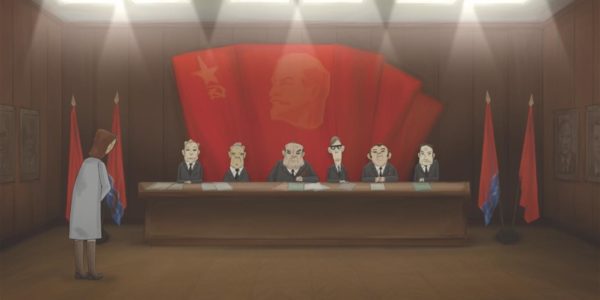In 1891, Eugen Richter predicted what the GDR would look like more than half a century later
Patrick van Schie
Karl Marx and his followers dissected “capitalist” society (in their own way) and predicted the revolution, but Marx and his followers remained vague about what post-revolution “socialist” society would look like. One of the few who gave a sketch of this was the SPD leader August Bebel. For example, the German socialist leader calculated how many calories a worker needed and which nutrients socialist society should therefore produce per person. In the nineteenth century the SPD included all kinds of German Marxists; Communists and the later Social Democrats were still in one party.
Bebel’s compatriot Eugen Richter, leader of the liberal left in the Reichstag, did not like the socialist vistas. In 1891 he published the novel Sociaaldemocratic visions of the future, a dystopia. Richter based himself on Bebel’s statements in parliament and on his publication The woman and socialism (1879). Richter incorporated this into his book in which he extended the socialist ideal of equality in all its consequences. The result was the sketch of a society that bore a stunning resemblance in parts to the GDR, the communist “salvation state” that would emerge on German soil more than half a century later.
Not everything was in accordance with the later reality. In Richter’s novel, the socialists had come to power after an electoral victory, not forced upon the country by the army of a foreign power (the Soviet Union). In Richter’s novel, the Socialists manipulated the later elections, but an opposition party was still allowed there. The parties allowed in the GDR alongside the communist SED were just puppets of the communists.
Equality was the ideal, so no one was allowed to earn more than another. You could indicate in which profession you thought you could make yourself useful, but the socialist party controlled state determined in which profession you would actually work and where you exercised that profession. Families were not taken into account. In socialist society, as outlined by Richter, marriage was merely a private affair, of no value whatsoever to the state. Obviously, it was far more important to work for the community in the right, that is, state-determined place, than to allow for something as “bourgeois” as the love between man and woman. So husband and wife could be sent to work and live in very different parts of the country.
Housing was allocated by the state. Savings were expropriated, so no one could afford a much nicer house than another. Although it was rumored that the socialist party elite themselves did indeed live better. Food and household goods were rationed. Annoyingly, people seemed to have a difference in taste, so that the houses were still unevenly furnished. So, over time, the state went on to allocate ready-to-use furnished homes, so that every home looked exactly the same. People were no longer allowed to distinguish themselves in clothing either [in the GDR this was allowed, but not in Mao’s China; PvS]. Preparing your own food was also out of the question from now on. With coupons you could go to collective canteens. The original choice of three types of menus quickly disappeared there. It was “more efficient” to prepare one pot. That people did not enjoy eating – a meal that contained less and less meat – did not matter much, because citizens were no longer customers in a socialist society. They also noticed this in the shops. Clerks looked upset when a customer came to disturb them in their own activities.
To promote equal opportunities for children, they were withdrawn from their parents, who had often already been torn apart anyway, and placed in state institutions. Of course, there they were taught the blessings of the new state. Other noises were soon lost in the press, no matter how much murmuring could be heard in the street. The new regime had promised when it came to power that politics and military would be abolished. But in a few years the police force and the number of military personnel grew more and more. Civilians who fled the country to settle in a capitalist state were shot at. Richter did not foresee the Berlin Wall, but he predicted that a communist regime would rather shoot than let go of civilians who chose a life of freedom.
Richter died in 1906, fifteen years after his dystopia appeared. At that time, a quarter of a million copies had already been sold. Unfortunately, the warning has not prevented the establishment of either the GDR or other communist satellite states. At the time, they did not arise during free elections but were imposed by force. Yet 130 years later, Richter’s booklet still offers a good warning against communism that makes human freedom completely subordinate to gray equality, and if necessary over dead bodies.
Afbeelding van DetBe via Pixabay





Follow Us!